Racism 18
Trump takes his politics to Tulsa

Trump went with his politics to Tulsa, scene of the worst massacre of African Americans in recent U.S. history.
By Natalia Plazas
June 20, 2020
Translated and edited by Walter Lippmann for CubaNews.
In 1921 Tulsa, the city Donald Trump chose to resume his campaign for the presidency, was the scene of one of the most atrocious massacres in U.S. history against the Black community. Nearly a hundred years after the event, the facts remain virtually unknown to society.

Smoke rises from buildings during the 1921 Tulsa, Oklahoma, USA massacre. Photo: Reuters
Donald Trump hit the nail on the head when he decided to resume his campaign for reelection in Tulsa, Oklahoma. Tens of thousands of his supporters await him there, but there is also a growing call for remembrance and justice from activist groups who remember that that city has not healed the wounds of the worst massacre in the country’s recent history against the African-American community.
On the night of May 31 to June 1, 1921, an entire neighborhood was razed to the ground and 300 black citizens were killed. The massacre began when a white crowd came to lynch a black man accused of sexually assaulting a white woman. That, supposedly, was the trigger for the tragedy, but history has revealed a much more perverse situation.
In the 1920s, the Greenwood neighborhood, a black enclave in the city of Tulsa, was noted for its economic prosperity. The distribution of land after the end of the American Civil War had benefited some African-American and Native American communities, and as a result Greenwood had become stronger, despite being segregated, like any black neighborhood at the time.

Archive image. A crowd of mostly African Americans lines up at the Exchange booth in Tulsa, Oklahoma, in 1921. © Reuters
From ‘Black Wall Street’ to a neighborhood in the ashes
Such was the commercial and economic success forged in Greenwood that it was commonly called the ‘Black Wall Street’, but soon its good fortune would bring it ruin. Members of the white community began to view their neighbors’ bonanza with suspicion and, interested in occupying their land during the railroad expansion, decided to attack the neighborhood.
On the night of May 31, a crowd of white men, supported by local authorities and even police, arrived in Greenwood and charged at the African-American population and their homes. The mob burned down homes and businesses to the point that when the situation calmed down hours later, at least 35 whole blocks had been left in rubble.
The blow took away the good fortune of the neighborhood forever. In the wake of the event, Greenwood’s recovery has been frustrated by the creation of laws promoting zoning or by building restrictions. Today in Tulsa, the social gap between blacks and whites is notorious. According to a Human Rights Watch report, poverty is almost three times higher among black citizens than among white citizens.
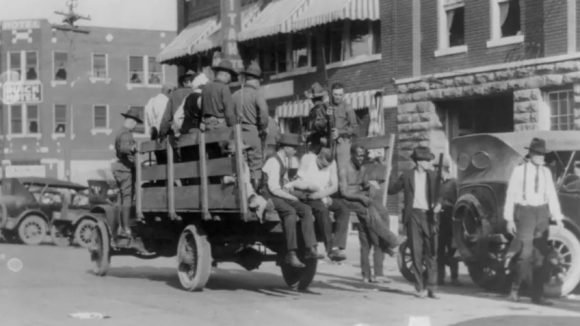
Archive image. A truck carrying soldiers and African Americans near the Litan Hotel during the 1921 Tulsa, Oklahoma race massacre. © Reuters
A Donald Trump rally ignites misgivings in a remote society
With Trump’s visit, originally scheduled to coincide with the celebration of Black Independence Day on June 19 [Juneteenth] and postponed amidst national protests against racism, the call for historical recognition of the victims and economic reparations for their descendants has intensified more than ever.
Less than a year before the 100th anniversary of the Tulsa incident, justice has yet to be established, despite the fact that the case has even been brought before the U.S. Supreme Court. Both lower courts and the high court have dismissed the claims. Currently, only two survivors of the massacre are still alive.
But Trump’s arrival has not only put the spotlight on a forgotten chapter of American history. His desperate attempt to revive in Oklahoma an image that has deteriorated in recent months due to the economic impact of the pandemic has highlighted the differences between his supporters and those who demand changes in the treatment of the African-American community.
“Any protester, anarchist, agitator, looter, or small-time person who goes to Oklahoma, please understand that they will not be treated as they have been in New York, Seattle, or Minneapolis. It will be a very different scene,” the president said before embarking on the trip to Tulsa.
The comment, which his critics call conflictive and divisive, comes at a time when the rejection of racial violence in the United States shows its greatest increase in decades, with weeks of massive demonstrations in multiple cities around the country that have also reached the doors of the White House.
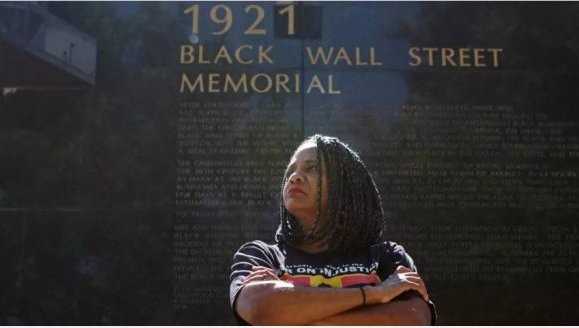
Tulsa Councilwoman Vanessa Hall-Harper poses for a portrait in front of a memorial to the 1921 Greenwood massacre. Tulsa, Oklahoma, USA, June 18, 2020. Lawrence Bryant / Reuters
The gesture that makes Trump uncomfortable

The gesture that makes Trump uncomfortable
The protests against racism, supported in different latitudes of the planet after the assassination of George Floyd, have also gained strength in the field of sport
Author: Alfonso Nacianceno | nacianceno@granma.cu
June 10, 2020 00:06:46
Translated and edited by Walter Lippmann for CubaNews.

Donald Trump attacked the Black football players, members of the well-known NFL, because a group of them were kneeling on the ground to hear the national anthem, in protest against racial segregation.
U.S. law requires the military to perform its usual salute. All other citizens, including athletes, must remain standing, facing the national flag, with their right hand resting on their heart, while the anthem is played.
By not following this guideline in different facilities, Trump, although there was no clause in the NFL regulations, pressured the organization’s directors to punish all players who expressed themselves in this way against racism and inequality.
In light of the current events in the convulsed American scene, when this Tuesday would be the burial of George Floyd in the middle of the incombustible protests, the United States Soccer Federation (US Soccer) will open a debate to on ending the controversial rule of prohibiting its athletes from taking a knee during the playing of the national anthem, the spokesman of the entity confirmed.
If the rule were to be repealed, it would immediately cease to have any effect. The measure came to life when Megan Rapinoe, four-time U.S. women’s national team champion and Golden Ball winner, knelt on the field in solidarity with American footballer Colin Kaepernick, who in the same gesture in 2016 sparked the anger of Trump, who pushed him out of the NFL
Rapinoe’s solidarity with the expelled player was the reason used by the president to radicalize the ban on kneeling on the ground.
The protests against racism, supported in different latitudes of the planet after the murder of George Floyd, have also gained strength in the field of sport, an important aspect of American national life. This is not only because of the rivalry that exists between the teams of disciplines that are widely followed by the population, but also because athletes are symbols that awaken empathy.
The quality of Black athletes in the United States is internationally recognized; many have been the protagonists of feats remembered throughout the world. Today, even though major competitions have been halted by the pandemic in that country, it is to be hoped that, when they return to action, there will also be a revival of protests in the stadiums, and knees on the grass.
Trump Attacks Four Congresswomen
 Trump’s Attacks on Four Congresswomen Because of Their Ancestry Repudiated
Trump’s Attacks on Four Congresswomen Because of Their Ancestry Repudiated
July 15, 2019
Translated and edited by Walter Lippmann for CubaNews
Trump generates a wave of outrage: absolutely racist and anti-American. It’s not something you should hear from the President of the United States.

Trump Rejected As Anti-American and Racist.
Regeneration, July 15, 2019. A few hours ago, Trump attacked four congresswomen who lead the popular opposition to his government. It’s a series of Twitter messages where the U.S. president tells them to “go home.
Trump doesn’t say names, but it’s very clear who the attack is aimed at.
Congresswoman Alexandria Ocasio-Cortez’s response from New York:
It is important to keep in mind that the words of today’s President, who tells four congresswomen of color to “return to their own country,” are the distinctive language of white supremacists.
Trump is comfortable leading the Republican Party into racism, and that should worry all Americans – Alexandria Ocasio-Cortez.
Racist and anti-American.
For her part, Senator Harris pointed out that the subject is old-fashioned and is still heard in the streets, but it is not something that should be said by the president of the United States.
“It’s absolutely racist and anti-American. And it’s an old trope – going back to where you came from that, you know, you might hear it on the street, but you should never hear that from the president of the United States,” Harris told the media.
Trump Against U.S. Congresswomen
“Return to your crime-infested countries,” wrote the U.S. president.
The response was not long in coming from dozens of Internet users, from citizens to politicians and the media.
“Attitudes such as these would be scandalous in any country in the world, but apparently, the American president acts outside of civility and proper political behavior,” postulates an American citizen.
The U.S. president does not name any particular person.
But among those mentioned would be Alexandria Ocasio Cortez, a New Yorker of Puerto Rican descent.
White nationalism, xenophobia and chauvinism. Disgustin.
Among the reactions, there is no hesitation in describing Trump’s statements as “despicable” and “repellent.”
What is certain is that three of the attacked congresswomen were born in the United States and one of them arrived at twelve years of age.
In this sense, they accuse the statements of “unmasking once again their white nationalism, xenophobic and chauvinism .
-It’s disgusting,” she points out.
Women’s collective opposing the object of the attack on Trump
Trump would have dedicated this diatribe to the female collective known as ‘The Squad’:
Alexandria Ocasio-Cortez, Congresswoman from New York. Born in New York, of Puerto Rican descent.
Just like Congresswoman Rashida Tlaib, from Michigan, born in Detroit, has Palestinian parents.
In the case of Ilhan Omar from Massachusetts , who arrived as a refugee from Somalia at the age of twelve. And she was the first Muslim woman elected to the U.S. Congress in 2016.
Finally, Ayanna Pressley, from Massachusetts, an activist woman of black descent.
The politics of division is how this Administration works. We are here to serve our country. Our families are here. Our children are here. We are here. I’m with my sisters.

Offended Reps Respond to Trump
Offended Congresswomen Respond to Trump

By Manuel E. Yepe
http://manuelyepe.wordpress.com/
Exclusive for the daily POR ESTO! of Merida, Mexico.
Translated and edited by Walter Lippmann.
“Despite the attempts by the occupant of the White House to marginalize and silence us, know that we are more than four people.”
“We follow the mandate to defend and represent those ignored, excluded and abandoned. Our squad is big. Our squad includes anyone who commits to building a more equitable and just world. This is the work that we want to go back to . Given the size of this squadron and this great nation, no one will be able to silence us.”
That’s how the four U.S. congressmen responded: Alexandria Ocasio-Cortez, Ilhan Omar, Ayanna Pressley and Rashida Tlaib, to the campaign of racist epithets launched against them by President Donald Trump who has offended simultaneously with his orders to armed agents to terrorize immigrants in the United States. and communities across the country.
House Speaker Nancy Pelosi, paraphrasing Trump’s campaign slogan promoting his re-election, accused him of trying to “make America white again (instead of powerful)”.
Trump had tweet with irony: “How interesting to see the “progressive” Democratic congresswomen, who come from countries where the governments are a complete and total catastrophe telling us, with screams and aggressively, how we should exercise our government in the States Why don’t you go back to those places that you’ve completely come to? less and crime-ridden where they come from to help fix the situation, Trump asks them the same way.
“Go back to where they came from? Let it be known that three of the congresswomen attacked by the President were born in the United States. Alexadria Ocasio-Cortez, is a native of the Bronx, in New York. She is the youngest woman elected to Congress; Ayanna Pressley, born in Cincinnati, is the first congresswoman to be born in Cincinnati. She is an African-American) representing the state of Massachusetts. Rashida Tlaib of Detroit is Palestinian-American; together with Ilhan Omar, they are the first two Muslim women to occupy seats in the Congress”.
Omar has been a U.S. citizen for more than a year. Melania, Trump’s third wife and current first lady, is a native of Slovenia.
Trump’s racist tweets have come to unite the fractured Democratic Party and quickly activated a demonstration of support for the four brand-new congresswomen, now collectively being called called “the squad.” Although it was the first formal reprimand of the House of Representatives Representatives to a president in office in more than a century, we must bear in mind that Pelosi blocked a more serious motion that tried to censure Trump.
Trump redoubled his verbal attacks against the four congresswomen whom he accused of being socialists and communists. These were typical attacks of the era of the McCarthyism. This should come as no surprise to anyone, as the first Trump’s attorney was Roy Cohn, who served as a lawyer for Senator Joseph McCarthy in the 1950s, at a time when he destroyed thousands of lives with his policies of anti-communist persecutiopn.
Probably, the use of racist rhetoric to ignite your white electoral base is one of Trump’s campaign strategies. In his book “Black History of the White House,” American University Profesor Clarence Lusane wrote, “For many Americans, the ‘white’ of the White House has implied a great deal. more than the color of the mansion; it has symbolized the tonality and the source of dehumanizing cruelty, domination and exclusion that have defined the long narrative of white people’s relationships with people of color in America.”
Last week, the four congresswomen who so clearly challenged Trump gave a press conference, in which they denounced the racism experienced by them and people of color in the United States. in general, noted the president’s policies on the detention of immigrants, family separation and the threatening raids of the Immigration and Customs Enforcement.
A major article by journalists and activists Amy Goodman and Denis Moynihan was published on the DEMOCRACY NOW website on July 19 with the title “President Trump redefines the concept of the White House”, provides important elements of analysis of the crucial racial conflict undercurrent that is resurfacing with his “cheerful” twitter and his band of jackals.
June 22, 2019.
This article can be reproduced by quoting the newspaper POR ESTO as a source.
Harriet Tubman will have to wait

Harriet Tubman will have to wait for her $20 bill.
The merits of the one chosen to illustrate the twenty dollar bills were obvious, although to tell the truth, not to the “tastes” of the current president.
 By Juana Carrasco Martín
By Juana Carrasco Martín
juana@juventudrebelde.cu
A CubaNews translation. Edited by Walter Lippmann.
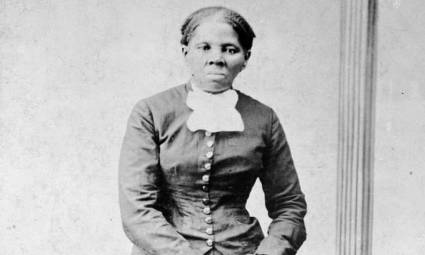 “For the first time, a woman will appear on U.S. bills.” “The face of Harriet Tubman, a former slave and abolitionist militant, will replace President Andrew Jackson on the $20 bills. On April 20, 2016, almost at the end of Barack Obama’s presidential term, these were headlines in the U.S. and world press – because of the power and globalized scope of the U.S. currency.
“For the first time, a woman will appear on U.S. bills.” “The face of Harriet Tubman, a former slave and abolitionist militant, will replace President Andrew Jackson on the $20 bills. On April 20, 2016, almost at the end of Barack Obama’s presidential term, these were headlines in the U.S. and world press – because of the power and globalized scope of the U.S. currency.
Harriet Tubman was born into slavery in 1820, escaped from inhumane captivity in 1849, and went on to organize slave rescue networks, many of them to Canada. During the American Civil War (1861-1865) she served with the Union army as a cook, nurse and even a spy. At the end of her life, Tubman – who died in 1913 at the age of 93 – helped organize movements for women’s suffrage.
Precisely, the new bill was to be circulated no later than 2020 to commemorate the centennial of the 19th Amendment to the U.S. Constitution, which gave women the right to vote.
A discriminatory designation for women was to be broken, and Tubman’s election to place her alongside other American heroes who are honored in the monetary system was not easy. The consultations lasted almost a year, [there were] thousands of proposals, and in the end, the finalists included First Lady Eleanor Roosevelt and the legendary leader of the movement against racial segregation and civil rights of the 1950s, Rosa Parks, the courageous young woman who, on December 1, 1955, in Montgomery, Alabama, refused to give up her bus seat to a white man, as racist laws and customs dictated.
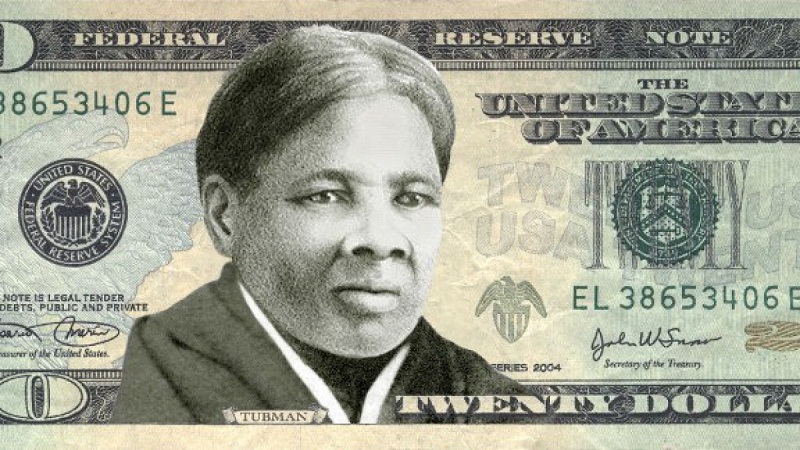
But, if in 2016 the then-Secretary of the Treasury Jacob Lew had already seen a photo and proof of design of the bill with the face of Harriet Tubman, why are there still no effective steps to replace the paper money that has General Andrew Jackson as the protagonist, even if it is moved to the reverse [side] as agreed?

Jackson also has a history: Owner of hundreds of slaves who worked on his Hermitage Plantation, he began in the military camp during the War of Independence against the British. He earned the rank of general by waging war on the Indians, first on the Creek, who called him Jacksa Chula Harjo, which means “Jackson, old and fierce”, and on to the Seminolas, among whom he was known as “sharp knife”. As the seventh president of the United States, Andrew Jackson stood out especially for having signed the Indian Removal Act, guaranteeing the theft of their ancestral lands and provoking a march toward Oklahoma in which thousands of natives died, and he was given the name of “Trail of Tears.
In 2016, Twitter overflowed with predictable messages from conservatives and traditionalists – not to say also racists – who saw the decision as an affront from the forces they called “politically correct”.
There werer also tweets in favor of the inclusion of the ex-slave. A historian commented in the Huffington Post: “In 2016, the United States faces serious problems related to poverty, inequality, and racism. The arrival of Harriet Tubman on the $20 bill will not solve these problems. Its purpose is to present itself as a vivid and powerful symbol of freedom, equality, and inclusion. It is up to us citizens to make use of it.
But then-Republican presidential candidate Donald Trump said in 2016 that he opposed the decision that honored Tubman. He called it “pure political correctness”. Rejecting the measure was already an insult to both women and the African American population, and he multiplied it by suggesting that Harriet Tubman should be on the two-dollar bill, [which has been] discontinued in the U.S. monetary system.
What is real now is that the current Secretary of the Treasury, Steven Mnuchin, said last Wednesday, May 22, that plans to replace Andrew Jackson’s portrait on the $20 bill by abolitionist leader Harriet Tubman are on hold until at least 2026.
Mnuchin was questioned by Massachusetts Democratic legislator Ayanna Pressley, who told him: “The American people understand the importance of representation on the banknotes of the world’s most powerful economy. … Do you support Harriet Tubman on the $20 bill?” and the cantifleus came as a response: “I have not made any decision since it refers to that decision not being made, in, as I have said (…) until 2026 probably.”
The representative reminded him that there was a national community process, to which Mnuchen argued: “again, it is a decision of the Treasury Department. Now my decision is focused on security functions”, referring to the fact that they could not be falsified…
Andrew Jackson is an admired president and perhaps even Donald Trump’s favorite. Some historians claim that Jackson had an arrogant and difficult character…
Isabel Moya’s Last Interview

Isabel Moya: Challenges for women in Cuba?
Let’s not think everything has already been achieved.
 By Flor de Paz, Cuban journalist and plastic artist
By Flor de Paz, Cuban journalist and plastic artist
March 8, 2018
Translated and edited by Walter Lippmann for CubaNews.
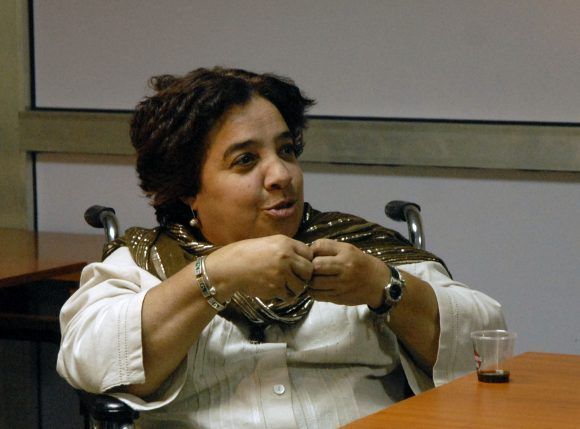
Isabelita, during a conference at the Editorial. Photo: Flor de Paz/ Cubaperiodistas.
This is the last interview given by the director of Editorial de la Mujer, who passed away in Havana on Sunday, March 4. Her testimony is part of an audio-visual series that was recently recorded to dignify the work of Cuban journalists, who will be holding their 10th Congress this year.
The project, which will soon be broadcast on Cuban television, is being carried out by young graduates of FAMCA and is the fruit of collaboration between the Union of Journalists of Cuba (UPEC) and the Association Hermanos Saíz (AHS).
— Constance and strength? A trait of my personality. I am, I don’t want to use the term fighter because it has many meanings, but I am a combative woman who always believes in Anaïs Nin’s phrase: “Put your dreams on the horizon and start walking”. You never reach the horizon, we know that, but push.
The entrance hall and living room of Isabel Catalina Moya Richard’s house are very spacious, as in most Havana construction of the first decades of the 20th century. Both spaces are demarcated only by four circular columns, and are passageways for the furniture that inhabits it —sofás, armchairs, armchairs, tables— and, among the latter, a huge one that Enrique Sosa, a professor at the University of Havana and panelist for years in the television program Escriba y Lea [Write and Read], gave to Isabelita.
It’s San Lázaro Street, in the popular neighborhood of Centro Habana. The noises of the road buzz around the house like a volcano erupting. And Isabel, seated in front of the precious wooden table that Professor Sosa gave her, now supporting an old typewriter, a souvenir from La Catrina, photos with Juan Carlos, and Gabriela, the 20-year-old daughter of both of them, as well as other ornaments, talks about the image she has hanging on one of the walls of the room: “it is Frida Kahlo’s Blue House”. It was given her by its author, the Mexican Aurea Alanis, who was in Havana for a course in gender photography.

Isa and her daughter Gaby, as a baby.
—I’ve always been very gregarious, I enjoy being in a group, I’m very social, but I realized that I wanted to study journalism because I liked to write, I liked to research, I liked to read, I liked Humphrey Bogart’s films, from film noir, in which it was always a journalist who discovered everything. And I thought: I want to be that kind of person who investigates, who reveals secrets, she says, while Daniela Muñoz Barroso and Lena Hernández’s cameras “focus” on her eloquence.
During a pause, her mother, also named Isabel, also 72, reaches for a glass of water and medication. “All my life I have known what my faculties and shortcomings are. I have a degenerative bone disease that has forced me to use braces to walk since I was born. I’ve been operated on many times and during those periods I devoured books and books; of course, without order or concert, I read The Consecration of Spring, by Carpentier, as well as seven novels by Corín Tellado.
At that stage she tried, above all, to fill herself with a world of words that would allow her to live other lives in her own life. And then, in high school, when teachers began to direct their reading, she realized that she really had writing skills.
—But look, I never approached journalism as literature; I have not written stories or fiction as journalism. No, I’ve always been interested in writing essays on history or politics. It’s important to write about reality. And, of course, I’ve written poems, like everyone else, to give them to the groom, but not because they are publishable. Far from it.
…
—I would say that I had a beautiful childhood; a very happy growth process. Starting school was an important time because I always loved studying. In the fifth grade, I won a literature contest with a fantasy fiction story. I felt tremendous joy!
“I don’t forget that in elementary school my political life began, even though I wasn’t very aware of that reality at the time. Many times, we would go with Vietnamese hats and leaflets glued on our uniforms to support Vietnam in its war against the United States. Also, one of the first marches I participated in as a child was for Angela Davis’ freedom. Then she came to Cuba and I realized that I was already worried about those problems. Later, in the middle school and high school years, when I made friendships that I still have, and when my interests were taking shape, I definitely knew that I wanted to study journalism.”
…
Isabel Catalina Moya Richard was born in Havana on November 25, 1961. She is the eldest daughter of a family of four, including her parents. Their existence – marked by the impossibility of their organisms to assimilate calcium and, in turn, an optimism compensating for the lack of the mineral and all difficulties – can be summed up this way:

Isabelita, together with Eusebio Leal, Historian of the City of Havana, and Deputy Yolanda Ferrer.
On her feet, on crutches or in a wheelchair, she is still herself: PhD in Communication Sciences, director of Editorial de la Mujer and the magazine Mujeres, the Associate Professor of the Faculty of Communication at the University of Havana, the president of the Chair of Gender and Communication and coordinator of the International Diploma in Gender and Communication at the José Martí International Institute of Journalism; the admirable José Martí Prize for Dignity and the National Journalism Prize (for her life’s work), awarded by the Union of Journalists of Cuba in 2016 and 2017.
—When I graduated, in 1984, I was the first in the group and was placed as a disseminator in the Office of Nuclear Affairs, but I did not agree. My dissatisfaction did not go down well because that institution was very important at the time. However, I wanted to do journalism and, when I asked to be relocated, I didn’t know where I was going to work for three months. The second choice was Mujeres [Women} magazine, and I took it as a punishment.
“How wrong I was! There were opportunities that many of my classmates didn’t have. I know all of Cuba thanks to my work as a reporter for Mujeres. I have been in the Pico Turquino, on the black beaches of the Isla de la Juventud, in the wonderful landscapes of Pinar del Río, in the Escambray… And, as at the same time I was attending the correspondence section, one day I thought: “Oh, I’m going to do a postgraduate course in research methodology”. And so I was able to design a content analysis tool that allowed us to classify all the letters we received. We get a lot of information from them, both for the magazine’s work and for the attention to the problems they alluded to. And I was forever hooked on research.
With the support of the Federation of Cuban Women (FMC), Isabelita had the opportunity to do a course on feminism at Casa Morada in Chile, and to participate in numerous international events on gender. Until in one of her daily inner dialogues, she asked herself: “Well, I have to try to create an environment where theories of gender and communication converge and thus we will have a better journalism”. And in this approximation, her doctoral thesis is aligned, for which she received the highest grade.
In the School of Communication, Isabelita gave her first gender classes, a horizon reached by which she lets us see great passion. When thinking about it, she brings to mind, that master’s degree given in Villa Clara, “one of the adventures in which I enrolled with UPEC: the teachers had to stay there every school week”.
Then it was time to found the Chair in Gender and Communications at the José Martí International Institute of Journalism, thanks to Guillermo Cabrera, she said. In this way, a line of training and research was opened in our country, of which we can be proud today. This is because, in addition to having graduates from numerous graduate schools, some of them have done their doctoral theses on the subject.
—More than two hundred communicators from all over Latin America have graduated from our courses. Through the Chair, I have also been able to teach at several important universities in the region and in Europe. Two years ago, for the first time, I gave online TV classes to some high schools in the United States. Having students everywhere is a delightful experience.
…
It’s February 3, 2018, Saturday morning. Isabelita, in front of Daniela and Lena’s cameras, talks about the issues that move her the most. Irina, with a demanding expression, reveals her concern for the continuous sounds coming from Calle San Lázaro, but this is the daily environment in which she lives.

Graphic memory of the wedding of Isabelita and Juanca.
—The challenges facing women in Cuba? The first is to think that they have already achieved everything. When we look at the statistics and see the number of women in the National Assembly, the number of women scientists and women communicators, and that more than seventy percent of the prosecutors are women, and so on, we come up with a distorted idea of reality. Because we have managed to open ourselves up in professions that were not previously considered feminine, we are now in the most complex moment, that of confronting subjectivity, culture, value judgments, and customs. These are much more difficult to change, since they are based on collective imagery and social representations. This is what we sing when we sing a bolero, a salsa song or sometimes, unfortunately, a reggaeton and what the novels tell us: romantic, dependent loves.
Her reflection is based on two substantive arguments: the communicational processes in Cuba do not problematize the reductive approaches of these audiovisual spaces, nor the subjective gaps that in the seventies the media managed to tackle documentaries such as that of Sara Gómez, Mi aportación, and the feature films Retrato de Teresa. Furthermore, attitudes that unwittingly blame and associate the advancement of women with certain family crises are frequent.
Today they say, “Women don’t give birth,” but that’s not the problem. The problem is that society has put women in the dichotomy of motherhood or professional fulfillment, so society has to change in order for the couple, the family, to have more children. It is not just a matter for women because even with all the advances in science and technology, it takes an egg and sperm to conceive a human being. But the media, instead of questioning this sexist approach, return and blame women for the problem of low birth rate.
Despite being public, of representing a social system that has human beings as the center of its goals, the media in our country does not achieve a racial balance, for example, Its aesthetics are very homogeneous: the majority of women come out with straightened hair. I liked it very much that the other day I saw a young black girl with her braids on the Morning Magazine. Because, as I say, there is no problem with straightening your hair, but in that fashion, it becomes a cultural mandate that forces you to assume aesthetics with which not all want to express themselves. It is still a challenge for diversity to be understood.
Using her experience as an example of what can be done in the communication processes, Isabelita talks about a work recently published in Mujeres magazine. It was about the people who sell coffee and fried foods from a window of what was the living room of her house, of a small house. And she asks, “What about the children living in these homes, where do they do their homework? You guys get to work? How do you reconcile business and family life in a small space like that??? Oh, and what good is it, grandparents live longer, but now the child is going to marry so grandma must move out of her room, and sleep in the living room…?
I know that there are people who think that these issues are minor and that the only thing that matters is global warming, but in what happens global warming there are people who live similar tragedies every day, so it is very good that there is journalism for global warming and that there is journalism that helps in the day-to-day, a service journalism and a journalism of social activism.

Isabelita, what does journalism mean to you?
A commitment to my contemporaries, to my country, to my people; a passion, a passion that saves. I have been sick, in the hospital at terrible times, when one of those moments in which the fragility of the human body is observed. Someone passed by and said to me, “Oh, how I like your magazine”. And, listen to me, all the fears and pains have been frightened away. So I tell you, journalism is my salvation.
And she added:
Rosa Luxemburg said that socialism is not just a knife and fork problem, it is a profound cultural revolution. I, therefore, believe that journalism will help transform machismo, sexism, homophobia, racism, the inheritance of five hundred years of Western Judaeo-Christian culture, first, from an atrocious first colonialism and, later, from a capitalism that destroys human beings.
(taken from Cubaperiodistas)
Spike Lee wants Trump to see “BlacKkKlansman”

Director Spike Lee wants Donald Trump to see his movie “BlacKkKlansman”
Translated and edited by Walter Lippmann for CubaNews.
Spike Lee expects Trump to see “BlacKkklansman”, his film about the Ku Klux Klan, a passionate film, with moments of tension and comedy about race relations in the United States over the decades.
“BlacKkkKlansman,” based on the true story of an African-American police detective in the 1970s who infiltrated the Ku Klux Klan, hits theaters on Friday.
Lee said the film’s release is specifically scheduled to commemorate the anniversary of last year’s violent clashes between white nationalists and anti-racist protesters in Charlottesville, Virginia, in which a woman was killed.
Trump was heavily criticized last year for blaming both sides for the violence, and images of the protests are included in the film.
“I want the man in the White House to see it too. I’m not saying his name,” Lee told Reuters Television Wednesday at the film’s Beverly Hills premiere.
“When I saw the horrific act of national and American terrorism, I knew right away that I wanted to do this,” Lee said of what happened in Charlottesville.
Topher Grace, who plays David Duke – leader of the Ku Klux Klan of the 1970s – said the cast and crew were impressed by the film’s contemporary relevance during shooting.
“It becomes more timely with each passing second, unfortunately. This film should not be more timely now than it was when the events occurred, but unfortunately it is,” Grace said.
(With information from Reuters)
Beyond Racism

Graphic Opinion: Beyond Racism
 By Adán Iglesias ,
By Adán Iglesias ,
Renowned Cuban cartoonist. Director of the humorous publication DDT.
Translated and edited by Walter Lippmann for CubaNews.
During the 2016 presidential campaign, Donald Trump was the candidate of several supremacist groups. Since his rise to power he has come to declare that among the supremacists there are “good people”.
Subscribe to Blog via Email
| M | T | W | T | F | S | S |
|---|---|---|---|---|---|---|
| 1 | 2 | 3 | 4 | 5 | 6 | 7 |
| 8 | 9 | 10 | 11 | 12 | 13 | 14 |
| 15 | 16 | 17 | 18 | 19 | 20 | 21 |
| 22 | 23 | 24 | 25 | 26 | 27 | 28 |
| 29 | 30 | 31 | ||||




You must be logged in to post a comment.